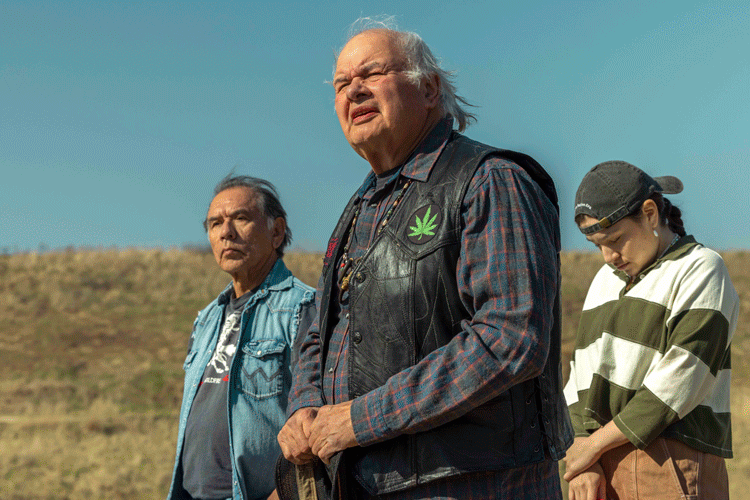Ozzie, bland? Look deeper
- Share via
Tuesday marked the release of the first authorized DVD of “The Adventures of Ozzie and Harriet.” Until now, only random episodes had been available, in low-budget, poor-quality “public domain” versions, and none bore the imprimatur of the Nelson family, which still owns rights to the original film elements and, just as important, to the creator’s inalienable right to say, “We made this.”
In the case of “Ozzie and Harriet,” that’s no small boast. Though its name has become synonymous with all that was supposedly bland about the 1950s and early 1960s, this apparently modest series about the perfectly ordinary days and nights of a midcentury nuclear family in a nameless (but to my eye, clearly Southern Californian) suburb or small town is a masterwork of television art. While broadly popular -- though it never ranked in the Nielsen Top 10, it ran from 1952 to 1966, the longest-lived sitcom on television until “The Simpsons” -- it was also subtler and stranger than its latter-day reputation would suggest. (Like the 1950s themselves, one might say.)
The DVD is a best-of affair that offers only a fraction of the series’ 435 episodes, but it shows off its qualities well. I don’t know if Ozzie Nelson was as formally ambitious as I think he was, but the thoroughness of his involvement -- creator, head writer, producer, nearly the sole director (son David would step in occasionally in later years), star -- argue that he was TV’s greatest auteur. From 1944 on, when “The Adventures of Ozzie and Harriet” began life as a CBS radio show -- child actors portrayed David and Ricky until 1949, when, ages 13 and 9, the boys stepped in to play themselves -- the semifictional representation of his family was for all intents and purposes Ozzie’s only job. Indeed, it’s the answer to the series’ famous unspoken question, “Why does Ozzie never go to work?” Because you’re already seeing him at work. To make him a salesman or a detective or a barber would have been an insult to the show’s delicate but dogged self-reflexive reality.
The title says everything: “The Adventures of Ozzie and Harriet.” Merriam-Webster defines “adventure” as “an undertaking usually involving danger and unknown risks” or “an exciting or remarkable experience.” This juxtaposition of the extraordinary and the ordinary is not meant ironically or to mock suburban or small-town life. It’s rather that, when you pay attention to little things, take small challenges seriously and are open to the everyday delights of the world -- Ozzie, as we know him from the screen, is a man who, if nothing else, is never bored -- the life you’re already living becomes quietly exciting.
“Realness” in television has come to mean something akin to grit: violence of action and language, bad habits, the more obvious social ills, dysfunctional families. But much that is held up as real -- “The Sopranos,” say, to take another well-known television brood -- is in fact intensely stylized and only marginally representative of the lives most people live. While it’s true that the Nelsons inhabit a world scrubbed of serious social or interpersonal conflict -- and, as with nearly every other television show of its generation, of people who are not white -- it is at the same time profoundly naturalistic. From the domestic detail of the perfectly persuasive house they live in -- including the double bed that Ozzie and Harriet shared years before any other TV couple were allowed similar liberty -- to the easy way the Nelsons have with one another, we are in a place we can regard as actual, wherever we come from.
Just so, while the Nelsons are not the most proficient actors, their scenes rarely feel scripted -- there is never the sense that the players know how things will turn out but rather that they are discovering life as it goes along. Ozzie -- who will regularly start to laugh at himself halfway through, saying something he discovers to be absurd as it leaves his mouth -- is especially gifted in this regard, but none of the family members ever seems to be pretending, even in the most artificial situations. As unlikely as the show around them might get, they are always who they are.
The Nelsons are in no hurry; there is time to talk, time to let things play out, for Rick to sing a song, for David to show off his trapeze skills, for Ozzie to shoot some pool. “Ozzie and Harriet” comes from a time before every episode was freighted with an A story and a B story, so there is more room to tell a story in a detailed way. If Ozzie gets a craving for tutti-frutti ice cream, that’s where the focus stays. A sampling of first-season titles shows just how little the series needed to go on: “Halloween Party,” “Ricky Goes to a Dance,” “The Day After Thanksgiving,” “Harriet’s Hairdo,” “Late Christmas Gift,” “Stop Worrying,” “The Bowling Alley,” “The Pancake Mix.”
Because they tend to split up the family, the later seasons (David a lawyer, Rick in college, both married, with real-life wives June Blair and Kristin Harmon playing onscreen wives June and Kris) are not quite as special as the early ones: The show is always better with all Nelsons accounted for, and never better than when Ozzie and Harriet are around. It’s their story in the end.
As David says one not-unusual morning at the kitchen table, “You know, one of these days I’m going to write a book. And you know what I’m going to call it? ‘The Adventures of Ozzie and Harriet.’ ”
More to Read
The complete guide to home viewing
Get Screen Gab for everything about the TV shows and streaming movies everyone’s talking about.
You may occasionally receive promotional content from the Los Angeles Times.







